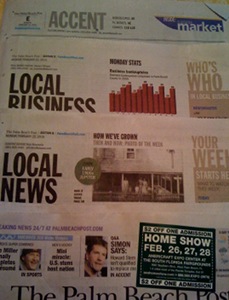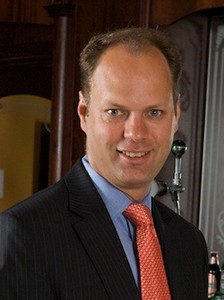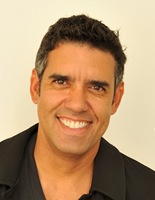Posted by Elena del Valle on May 19, 2010

New York City is among the major cities drawing new white residents
Photos: New York City Department of Parks and Recreation, Wikimedia
Many Americans may be surprised to know that since 2000 most of the growth in our country, 83 percent, has been driven by minorities. Researchers estimate that by the middle of this century today’s minorities will be the majority of the country’s population. Already the majority of children in large cities is from minorities. At the same time, there are significant changes in the demographic breakdown of our 100 largest urban and suburban areas. Although during the recession fewer people are moving than during normal times in the last years there have been population shifts worth noting.
I first heard about the trend toward urban center renewal during a podcast interview with Steve Bergsman, author, After The Fall: Opportunities and Strategies for Real Estate Investing in the Coming Decade earlier this year (see Listen to interview with Author Steve Bergsman) One of the changes in America’s demographic distribution in the coming years, he said, would be a renewed interest in urban centers and a falling out of favor of suburbs. According to Steve, this urban regrowth would be driven in part by the high price of gasoline. He has been proven right, at least in the major metropolitan areas of our country where many people are being drawn to live.
A recent Brookings Institution analysis of census data between 2000 and 2008 indicates many young whites are heading to the cities in search of employment, public transportation and city ambiance while Asians, Hispanics and blacks are increasingly found in the country’s suburbs. Although the suburbs are still identified as white for the first time a majority of racial and ethnic groups in large metropolitan areas lives outside the cities.

Washington D.C.’s white resident population grew 5 percentage points
The suburbs continue to be the home of Baby Boomers aged 55 to 64 and now claim a large percent of a less desirable demographic for marketers, the poor. Surprisingly, the suburbs are where the largest poor population in the country can be found. Of course, the changes do not affect all cities. According to May 9, 2010 The Associated Press article, Washington, D.C. and Atlanta gained the most whites (5 percentage points each) followed by New York, San Francisco, and Boston. Other cities in the white flight scope include Portland, Oregon, Raleigh, North Carolina and Austin, Texas.
The Brookings Institution, a nonprofit public policy organization based in Washington, D.C., is dedicated to conducting research to advance three goals: “Strengthen American democracy; foster the economic and social welfare, security and opportunity of all Americans and; secure a more open, safe, prosperous and cooperative international system.”
Posted by Elena del Valle on May 17, 2010

Staff cuts not withstanding many media outlets have survived the transition from traditional formats to today’s multimedia mix. It may be that the new formats brought some changes for the better such as increased efficiency. For example, at some media outlets a single enterprising young journalist reports, produces and captures video footage for his or her story. And newspaper editors express satisfaction with the new technology oriented staff that have been brought on board in recent years and their willingness to try new things.
In spite of that future funding is a source of concern for many news executives when it comes to the long term viability of their media outlets, according to a recent study. Alternative funding options, including government financing, are not appealing for them and they worry about their outlet’s survival over the next decade unless they are able to figure out a viable source of funding to replace the old business model.
Two thirds of survey respondents had serious reservations about receiving government subsidies and 78 percent were not interested in accepting funding from interest groups. About 50 percent were worried about funds from government tax credits and more 33 percent had doubts about private donations.
Online most of the media efforts are focused, according to the participants in the survey, on traditional sources of revenue such as display and banner ads. These remain the main area of effort and the one survey respondents had the highest hopes would yield results. Another area under consideration was revenue from products outside of news.
The results of the survey, conducted by Pew Research Center’s Project for Excellence in Journalism in association with the American Society of News Editors (ASNE) and the Radio Television Digital News Association (RTDNA), were released last month.
“Our mantra this year is experiment and fail quickly,” said a newspaper news executive who participated in the survey. “Don’t be afraid of change and don’t stick with something too long if it doesn’t work.”
“Outside funding options are a bad idea overall,” said a broadcast news executive survey respondent. “They are being used to ‘save’ old models of journalism that are no longer economically viable and will die out over time no matter what.”
Interestingly, there were significant differences between the attitudes of survey respondents from newspaper-based newsrooms and those of broadcast outlets including their view of journalism’s future. Broadcast news executives were more pessimistic with almost twice as many respondents who viewed journalism as headed in the wrong direction compared to those who thought it is headed in the right direction. Newspaper news executives were slightly more optimistic.
Many executives in marketing, advertising and public relations may believe the future of media is closely linked to their career future and seek an understanding of the possible direction of print and broadcast media to better serve their clients and their professional futures.
The researchers received responses from 353 journalism executives from the ASNE or RTDNA membership lists after inviting them to participate in the online survey by email between December 2009 through January 2010. Of the 353 news executives 36 percent were ASNE members and 24 percent were RTDNA members.
Posted by Elena del Valle on May 14, 2010

Managing Hispanic and Latino Employees
Photo: Berrett-Koehler Publishers, Inc.
Louis E. V. Nevaer, author of several books and director of Hispanic Economics, wrote Managing Hispanic and Latino Employees A Guide to Hiring, Traing, Motivating, Supervising and Supporting the Fastest Growing Workforce Group (Berrett-Koehler Publishers, $24.95) a book, published January 2010 about managing Hispanic employees. Relying on estimates that 25 percent of the domestic workforce is of Latino heritage and researcher predictions that Hispanic workers will represent more than half of the country’s workforce by 2050, the writer promises practical advice and his conclusions, based on research data, of what he believes are unique cultural issues in hiring, motivating, training, supervising, developing, retaining, and managing Hispanic workers.
“American business is confronting a crisis of confidence in its ability to identify, cultivate and nurture Hispanic Talent. In 2005, Hispanics in comprised 14 percent of the nation’s population, but constituted 22 percent of workers today,” said Nevaer by email from Mexico when asked why he wrote the book. “That Hispanics are almost a decade younger than the population at large means that Hispanics, Latinos and Latin American immigrants, disproportionately, are of working age, either leaving college and entering the workforce, or well on their way to establishing their careers; and Hispanics in 2050 will represent 32 percent of the nation’s population, but will comprise 55 percent of workers.
As America’s Baby Boomers and Generation X-ers mature and retire, Hispanics and Latinos, native born and Latin American immigrants alike, will dominate the workforce. This book is blueprint for helping organizations throughout the U.S. deal adequately with the changing American workforce.”
The 269-page softcover book is divided into three parts, The Hispanic Employee and American Demographics, The Strategies and Skills for Supervising Nonexempt Hispanic Employees, and The Hispanic Employee and the Organization’s Future; and 10 chapters.

Author Louis E. V. Nevaer
The author opens the book with a quote from Nobel laureate Gabriel Garcia Marquez’ famous novel One Hundred Years of Solitude and a Note on the Nomenclature in which he clarifies his use of the terms Latino, Hispanic and Latin in the book. He identifies Latinos as English dominant U.S.-born Hispanics; Hispanics as those of Latin American or Iberian ancestry fluent in Spanish; and Latins as those born in Latin America who migrated to the United States.
Nevaer is a contributor to Pacific News Service and New American Media. He is the author of over a dozen books, including HR and the New Hispanic Workforce and The Rise of the Hispanic Market in the United States.

Click here to buy Managing Hispanic and Latino Employees
Comments:
Filed Under: Books
Posted by Elena del Valle on May 12, 2010

A moment in the Box ad from the Anthem 3 campaign
Photos, video: Heineken USA Inc., Adrenalina
In mid April 2010, Heineken USA Inc. launched Anthem 3, a Spanish language Tecate beer ad campaign targeting Mexican men, ages 21 to 34, who have lived in the U.S. less than 10 years. Three 30-second ads were designed to depict the journey of Mexican men trying to establish a new life in the United States while celebrating their character. The new ads, available on Tecate.com and scheduled to air for one year on television, were meant to be a natural evolution from a similar campaign, Con Carácter (With Character), the company launched two years ago. Scroll down to watch the Boxing and Gran Manzana ads in Spanish.
Created by Adrenalina, Tecate’s New York City-based advertising agency the 30-second spots feature everyday characters such as Ezequiel Peña, a construction worker; Tomas Ortega, a window washer; and Jose Dominguez, a truck driver. Each storyline was developed to showcase the “individual boldness, masculinity, and character” these men man need to face life’s challenges. The producers hope that since the ads are set in New York and Los Angeles, consumers may relate to the situations the portray. To enforce the branding the characters toast their accomplishments with a Tecate at the end of each Spanish-language commercial.

A moment in the Tío Sam ad from the Anthem 3 campaign
The ad team hired Mexican director and producer Simón Bross, best known for his commercial work, to create the TV ads. In addition to the three Anthem 3 spots, the brand also developed a boxing- and soccer-themed commercial to support Tecate’s platforms. The first spot was scheduled to air April 12 on national and regional Spanish-language networks Univision, Telemundo, Azteca America, Galavision, and ESPN Deportes.

Christian McMahan, CMO, Heineken USA
“Tecate understands the challenges Mexican men face from the moment they wake up. Our approach with this campaign, which differs from previous Anthem ads, was to develop situation-relevant communication delivered by everyday individuals that will help establish a stronger emotional connection with our consumers,” said Christian McMahan, chief marketing officer, Heineken USA.
The campaign also includes new radio commercials that are a follow up to the Disclaimer spot, one of a series of radio ads rolled out in 2009. Each ad was designed to target consumers during various touch points of their day. The messages poke fun at men with ritualistic morning, day, or evening behaviors that some may consider less than manly or lacking character.
The radio ads are due to air on Univision Radio and other national and regional Spanish-language radio networks. Television, radio and out-of-home ads will be placed by Tecate’s media buying and planning agency MediaVest 42 Degrees.

Manuel Wernicky, president, CIO and managing partner, Adrenalina
“Two years ago when we started this campaign, we brought these men out of the shadows. This year, we’ve given them a name,” said Manuel Wernicky, president, chief ideas officer and managing partner, Adrenalina.
The commercial titles, produced by Cortez Brothers/García Bross in two months, are Gran Manzana, Toro, Box, Fútbol and Tío Sam. Staff involved in the project include: Eduardo Martinez, director of photography; Ivar Rodríguez, associate creative director; Ismael Díaz, art director; Julian García, copywriter; José Escobar, agency producer; Yonathan Bendesky, senior brand leader; and Ed Rivero, executive producer, Production House. The post production was the work of Wild Child Post.
Heineken USA Inc. is a subsidiary of Heineken International BV importer of: Heineken beers, Amstel Light, Newcastle Brown Ale, Tecate, Tecate Light, Dos Equis, Sol, Carta Blanca and Bohemia brands from FEMSA Cerveza of Mexico. Adrenalina New York is part of the MDC Partners network.
Comments:
Filed Under: Video
Posted by Elena del Valle on May 10, 2010

A scene from the new Ace Hardware Spanish language ads
Photos, video: Revolucion, Ace Hardware Corp.
Hoping to attract Spanish speaking customers Ace Hardware launched its first Spanish language TV and radio ad campaign. In April, three 30-second Spanish-language TV spots began airing nationwide on Univision, Telemundo, Telefutura, Galavisión, ESPN Deportes and Fox Sports En Español. Two
Spanish-language radio spots were scheduled to air last month. Two Spanish language morning shows, Despierta América (Wake Up America) and Levántate (Get Up), are scheduled to feature advertorial how-to segments in tandem with the campaign which will end in June 2010. Scroll down to watch the video ads in Spanish.
In an effort to tap into the increasing buying power of the U.S. Hispanic market, estimated by some to be just shy of $1 trillion, the 86-year-old company reached out to Revolucion, a communications agency, in 2007. Relying on a trial campaign targeting Hispanics in late 2008 that resulted in a seven percent year-to-year jump at Ace’s Hispanic stores in Denver (defined as those with 15 percent or more
Latino shoppers) and outperformed non-Hispanic stores nationwide the hardware chain continued testing. Following a second effort that spring and summer in Denver, Sacramento and Chicago with “even greater success” Ace asked Revolucion executives to develop a national Spanish language ad campaign for 2010.

John Surane, vice president, consumer marketing, merchandising and paint, Ace Hardware
“We’ve seen strong results at retail by reaching out to the Hispanic market and understand the importance of communicating directly to these customers,” said John Surane, vice president, consumer marketing, merchandising and paint at Ace Hardware in a press release. “We identified a unique Hispanic insight that separates Ace from the big boxes.”

José González, partner, Revolucion
“In many countries, the ferretería (hardware store) is part of the local community where you’re always helped and can get in and out quickly,” said José González, partner, Revolucion in a press release. Ace is the place where Latinos can have that same customer experience in the U.S. and these spots convey that relevant message.”
In the Manifesto TV spot, a man is standing in a big box store looking frustrated and confused. The voice-over asks, “¿Qué pasó con la ferretería de la esquina? ¿Con la persona que estaba allí para ayudarte?” (“What ever happened to the corner hardware store? To the person who was always there to help you?”). The TV spots all end with the statement: “Menos tiempo dando vueltas. Más tiempo para lo importante.” (“Less time running in circles. More time for what’s important.”).

A scene from the new Ace Hardware Spanish language ads
The Revolucion team for the Ace Hardware campaign was Jose Gonzalez, partner, chief strategy officer; Federico Mejer, Partner; Roberto Alcázar, executive creative director; Henry Alvarez, art director; Pilar de Posadas, executive producer; and Ana Paz, senior account executive.
Ace Hardware has 4,500 locally owned and operated hardware, home center and building materials stores, making it one of the largest hardware cooperatives in the industry. Headquartered in Oak Brook, Illinois, Ace operates 14 distribution centers in the U.S. and one in Shanghai, China. Its retailers’ stores are located in all 50 states and more than 60 countries.
Comments:
Filed Under: Video
Posted by Elena del Valle on May 7, 2010

Emotional Branding
Photos: Allworth Press
In the updated and revised edition of Emotional Branding the new paradigm for connecting brands to people (Allworth Press, $19.95), a 325-page softcover book published in 2009, Marc Gobé discusses society’s migration from objective to subjective thought and rationality to desires and how it affects branding.
He examines the power of social media and the reasons he believes the way we do business is changing thanks to the Web. In the book he includes mentions of market segments such as Baby Boomers, generations X, Y and eXel, gays, and women. In Chapter 2 (pages 29 to 42), he discusses the American Melting Pot, specifically African-Americans, Asian-Americans and Hispanics.
Although he indicates that almost all industries should target U.S. Latinos he highlights eight areas where Hispanics tend to outspend non Hispanics: Food consumed at home, apparel, telephone services, rental housing, TV/radio equipment, personal care products, public transportation and cleaning supplies. He points out that brand managers need to understand what issues are most important and influential among Latinos to target their aspirational interests.
The book is divided into three sections and 15 chapters. The sections are Relationship – customer, customer, customer; and Sensorial experiences – the unchartered territory of branding; Imagination – innovation is a brand’s best friend.

Author Marc Gobé
Gobé is president of Emotional Branding, LLC, a New York think tank and consulting firm dedicated to creating “content for online experiences.” He co-founded and is former chief executive officer of Brandimage (formerly Desgrippes Gobé). The designer, photographer, filmmaker, and public speaker who dedicates his time to connecting brands emotionally with people in a positive way also authored Brandjam and Citizen Brand.

Click here to buy Emotional Branding
Comments:
Filed Under: Books
Posted by Elena del Valle on May 5, 2010

An iPhone
Photos: Apple, Motorola
Once upon a time there was print media. Then came radio and television. The Internet changed our world and marketing along with it. Now we can listen to some radio programs and watch television shows online whenever we want. The media have fragmented.
That’s before even mentioning ethnic media outlets. Or, dare I say it, the newly available and much anticipated iPad which threatens to change book and magazine publishing, among other things. At the same time, there is a device nearly everyone has and carries with them most of the time, cellphones. Mobile phones have become ubiquitous in our country and in many parts of the world, presenting a wide open marketing window of opportunity.
By the end of this year, there will be 5 billion mobile phone subscriptions world wide, according to a February 18, 2010 The Economist online article. Many mobile phone conversations are lasting longer than they did in the past. Ten years ago cellphone users spoke for an average 174 minutes a month, according to the GSM Association, an industry group. That average had reached 288 minutes by September 2009.

A Motorola Droid
Some places have chattier users that others. For example, people in Puerto Rico talk the most, 1,866 minutes according the GSM Association. This may be because cheap plans include unlimited calls to the American mainland where family and friends are often based. On the continent, Americans are using 835 minutes (including incoming minutes paid for by the subscriber). Others among at the top of the list of heavy users are Hong Kong, China, Uzbekistan, Singapore, India, Canada, Israel, and Belarus. The three lowest users? Sao Tome and Principe, Cambodia and Philippines.
Who is using mobile phones in America? It seems everyone old enough to use one has a phone or some people have more than one. In the three month average ending in February 2010, 234 million Americans 13 years of age and older were mobile subscribers, according to comScore MobiLens data released last month. Since there are just over 300 million people living in the United States including babies and children, 234 million is a high percentage of the population that is capable and old enough to have a phone.
Although the comScore study does not breakdown use by ethnic group, US Hispanic Use of Telecommunication Services 2006 – 2011, a market research report by The Insight Research Corporation, examines mobile phone use by blacks, Hispanics and Asians in the United States. That organization’s researchers estimated that one out of every three dollars spent on telecommunications services in 2009 would be purchased by domestic ethic communities.
A March 2009 Scarborough Research report indicates Hispanics like cellphones, are more likely than the average person to have a cellphone, and outspend many others on cellular usage. Members of this market segment also tend to use the phone’s functions beyond talking, often taking advantage of picture taking, text messaging, email, Internet access and downloading applications.
Posted by Elena del Valle on May 3, 2010

Marcelino Miyares, director, Mercury en Español
Photo: Mercury en Español
A podcast interview with Marcelino Miyares, Jr., director, Mercury en Español is available in the Podcast Section of Hispanic Marketing & Public Relations, HispanicMPR.com. During the podcast, Marcelino discusses direct response marketing to Latinos in the United States with Elena del Valle, host of the HispanicMPR.com podcast.
Marcelino has expanded Mercury en Español which is one of the first full service Hispanic direct response specialty practices in the U.S. In his role as a strategic planner and media director, he has developed marketed communications programs for Body-by-Jake, Citibank, MCI, Signature Group, Montgomery Ward, PepsiCo, Ameritech, Philip Morris, PharMor, and American Stores, among others.
Marcelino began his career as media director and account planner for UNIMAR in Chicago. He built extensive retail marketing and telecommunications experience as a Strategic Planner. In 1991, he moved to Los Angeles and co-founded Tamayo Miyares Advertising, a marketing communications firm specializing in campaign integration for U.S. Hispanic markets.
To listen to the interview, scroll down until you see “Podcast” on the right hand side, then select “HMPR Marcelino Miyares” click on the play button below or download the MP3 file to your iPod or MP3 player to listen on the go, in your car or at home. To download it, click on the arrow of the recording you wish to copy and save it to disk. The podcast will remain listed in the April 2010 section of the podcast archive.






























